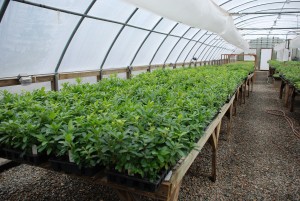Before starting new spring vegetable and flower plants, first take some time to make sure that the greenhouse is clean. Follow these three basic rules:
#1 – Repair or replace rotten or decayed wooden structural beams or posts, including benches. Be certain that water does not puddle on floors causing disease and insect breeding areas, mold, mildew and algae problems.
#2 – eliminate of over-wintering greenhouse pests, even if the area was unheated during the winter. Weeds and plant debris harbor overwintering insects, diseases, and viruses. Here is a short to do list:
- Remove all weeds and plant debris. Aphids, spider mites, thrips and whiteflies may move onto newly planted crops from weeds.
- Clean work areas and production surfaces first by sweeping and/or hosing down.
- Clean up old growing medium left on benches and floors to reduce breeding areas for pests like fungus gnats, shoreflies and Western flower thrips.
- Disinfect to kill all pathogenic organisms utilizing a number of commercial disinfectants, including hydrogen dioxide and quaternary ammonium compounds. Scrub up or dispose of previously used plastic pots and trays, tools and equipment.
- Keep hose nozzles off floor.
#3 – Inspect all new incoming plants, even newly purchased plants and cuttings. Outside overwintering plants may have insects and scales and mites on them.
Most pre-emergent herbicides are NOT labeled for use in greenhouses; they may cause significant plant injury. Roundup® herbicide is labeled for application to greenhouse floors. Landscape fabric for weed prevention and new gravel on floors and under benches reduces weed populations. Follow the herbicide label for proper application rates and restrictions to prevent spray drift and volatility that could injure plants.
When potting up: inspect and discard plants with brown unhealthy roots; swellings on the roots (root knot nematode); abnormal leaf vein discoloration (foliar nematodes); mosaic ring spots, dark lines and rings (viruses); and chlorotic leaves (nutritional disorders).
In summary start out clean and make all efforts to stay clean.


 Posted in
Posted in 
